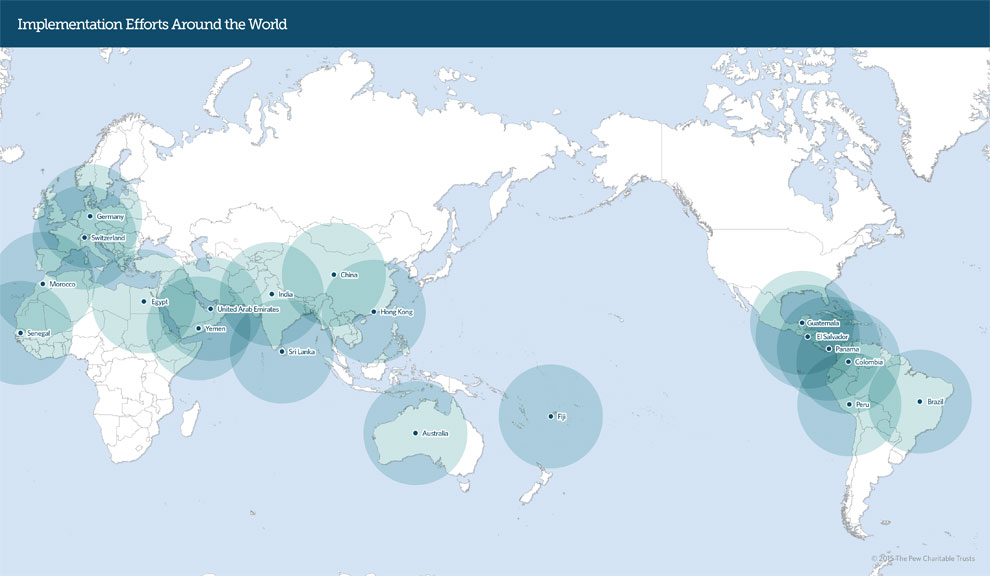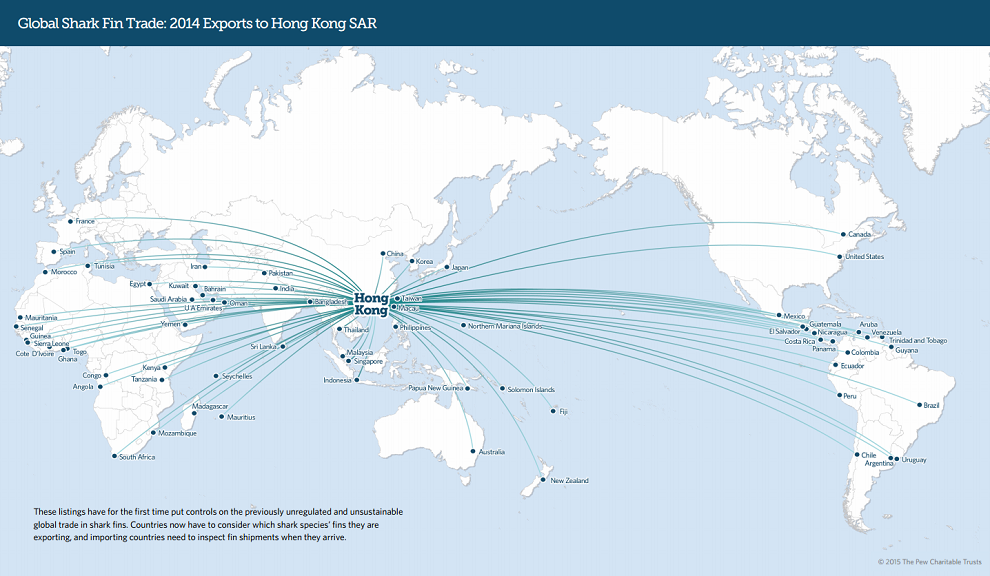Protecting Sharks, Enforcing CITES
A global effort
 Rodrigo Friscione/Getty Images
Rodrigo Friscione/Getty ImagesGlobal shark conservation efforts took a major step forward in 2013, when five shark species and two species of manta ray were added to Appendix II of the Convention on International Trade in Endangered Species of Wild Fauna and Flora (CITES). The listings brought international protections for regularly traded shark and ray species for the first time. To prepare for the September 2014 implementation deadline, CITES Parties across the globe coordinated on an unprecedented scale to host workshops, enact domestic legislation, and create enforcement tools to ensure that trade in these vulnerable species is legal, sustainable, and traceable.
The Pew Charitable Trusts created this brief to highlight a portion of the global work that has been completed by CITES Parties, work that will continue to help rebuild these shark populations.





